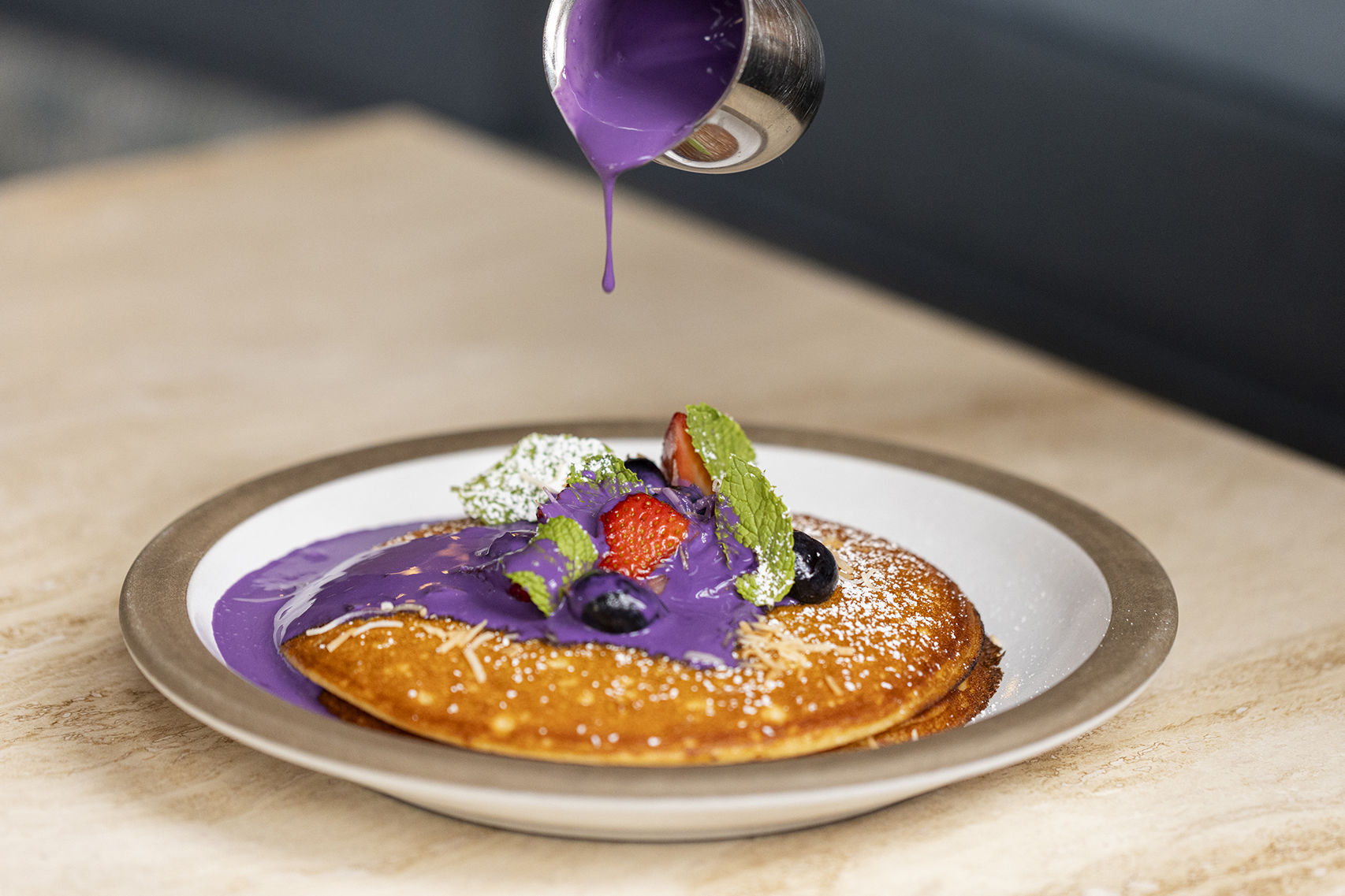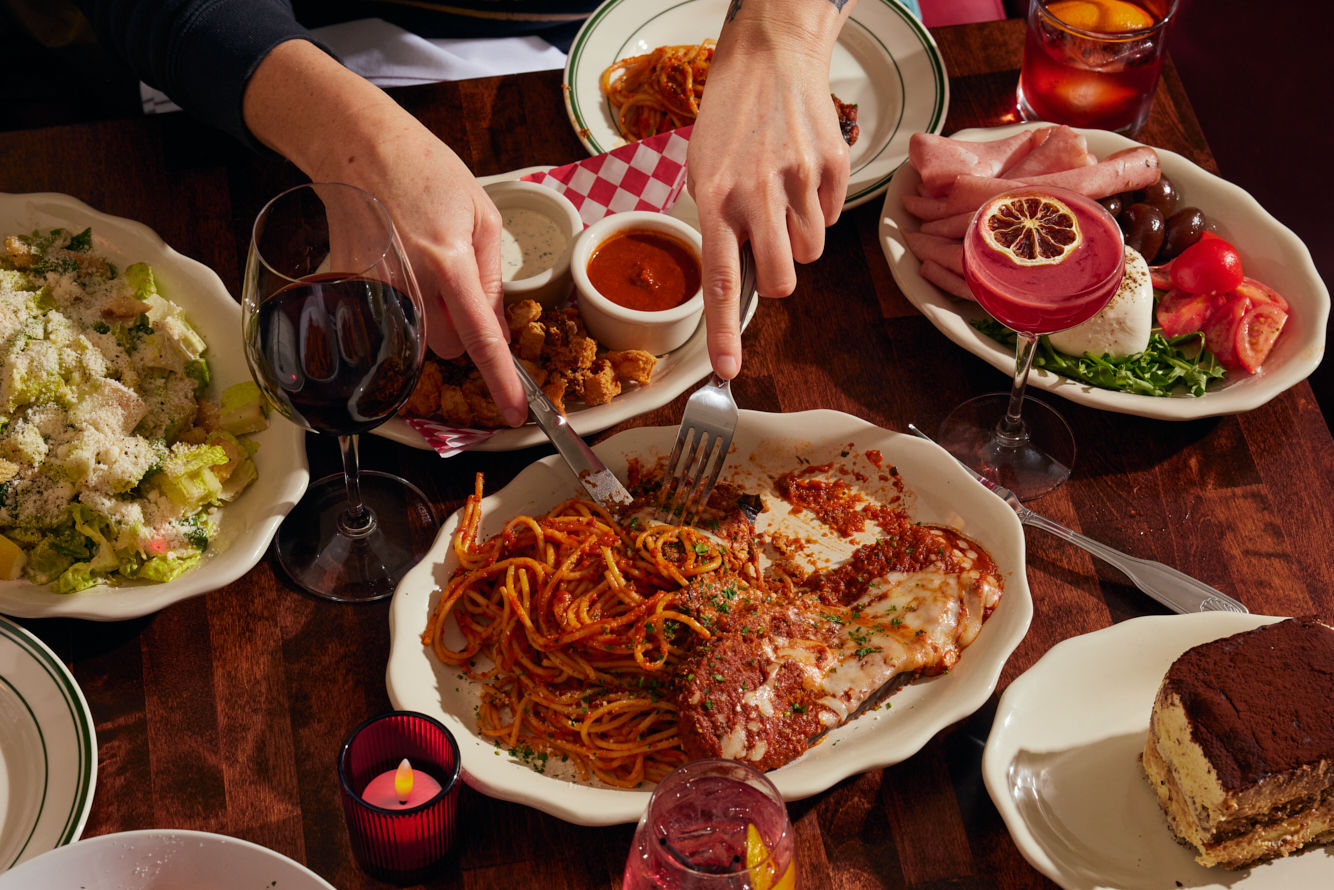2010 Best Restaurants: Evolution of a Revolution
This is our guide to the revolution. We show you eight venues that represent the latest evolution of Portland’s scene. Some of these barely feel like restaurants at all, offering instead an experience akin to a custom-crafted meal in a home (and something you’d never find in New York—and certainly not at these prices).
Grüner
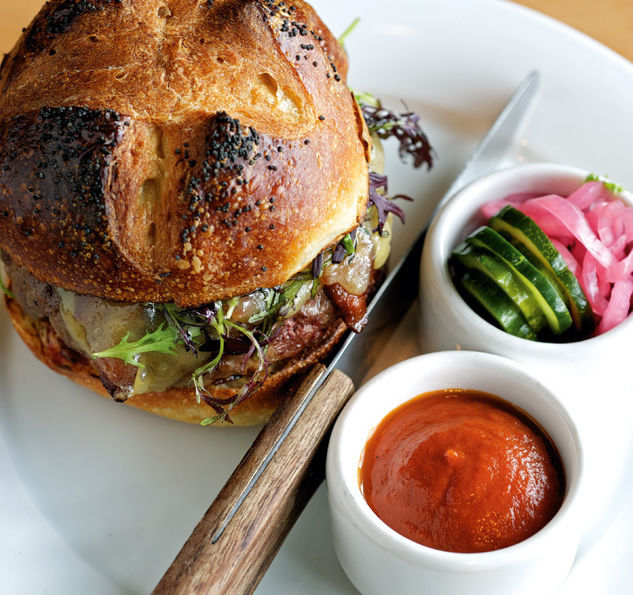
The Grüner burger
Image: David Lanthan Reamer
Portland’s DIY food movement loves to revel in recycled cool and I-dare-you-to-eat-this bravado. But legendary chef Chris Israel shrugged and went his own way with Grüner, his anti-frumpy ode to “alpine cuisine.”
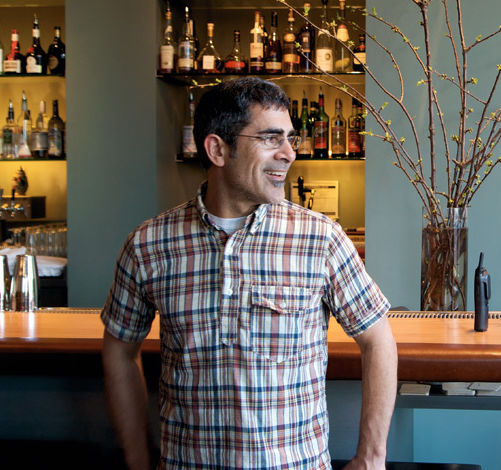
Chef-owner Chris Israel
Image: David Lanthan Reamer
Israel, of course, knows how to deliver elegant cool. His 1990s-era Zefiro gambled on serious but sexy cooking in a fern-bar city, giving style-phobic Portlanders a reason to break out the party clothes. With Grüner, he’s unveiled his riskiest trick yet: challenging our expectations of what ancient, gut-busting specialties might be. The menu free-roams across Europe’s midsection for ideas handcrafted in the kitchen, from fresh-smoked speck to tiny braids of pretzel bread with exactly the right amounts of chew and salt, sent out to tables just to say hello. Grüner makes art out of the lumpen, the uncool, and the unsung: dumplings, radishes, calves’ livers.
As much designer as chef, Israel misses no detail of the dining experience, be it the clipboard menu bound with a thick rubber band; the blond-wood tables popping against slate-colored walls; the jewel-like bar bottles backlit with a sea-green glow; the sleek, semi-private communal table. The final check is even delivered in an old German paperback from Israel’s own collection.
Israel is never about food gimmicks—he’s an old-school traditionalist whose cooking is casual but stylish, measured but not uptight, a marvel of precision. Still, you wish he’d bust out on occasion, blow up the neat and tidy approach now and then. Nevertheless, there’s so much to yodel about here: the confident, chic vibe; the taste fixations you return for over and over, like the addictive fried, smashed potatoes, the fantastic soups, and the little doughnut fritters called Berliners, fresh and warm and oozing syrupy jam. Israel is back … and his return feels like a cold slap of mountain air. —KB
Whiskey Soda Lounge
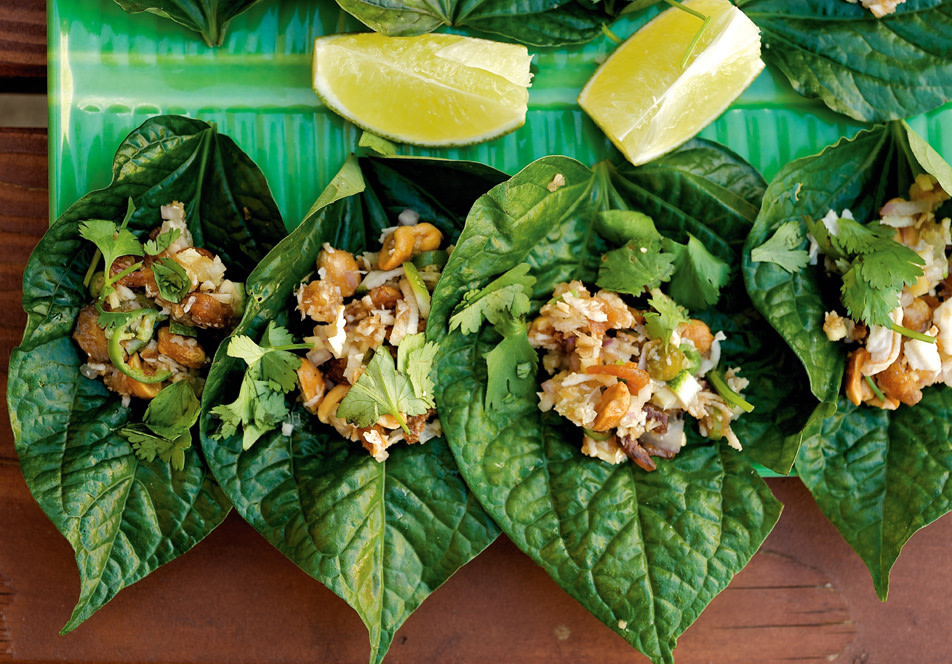
Whiskey Soda Lounge— Miang Kham
When Pok Pok chef Andy Ricker watched the steady swelling of the crowd of patrons waiting—outside—at his Thai-street-food joint, he did the only thing a humane restaurateur (and savvy businessman) would do: he built a waiting room. But leave it to Ricker to turn a simple holding den across the street into one of the most original new watering holes in America—the Whiskey Soda Lounge.

Chef-owner Andy Ricker
Image: David Lanthan Reamer
Drawn from what the Thais call aahaan kap klaem, or food made for eating with booze, Ricker has imported a collection of Asian pub snacks rarely seen outside their home turf, all served without compromise to Western palates: stewed pork ears with black vinegar dipping sauce; frog legs fried with garlic, alongside chile sauce for dunking; a bamboo-shoot salad prized by Thai-street-food connoisseurs but gym-shoe pungent to the novice. You can wash them down with homemade drinking vinegars, savory cocktails, and ice-cold bia wun or “jelly beer” that’s been chilled to a slushy finish in a traditional machine Ricker hunted down on one of his regular jaunts to Thailand.
Ricker also imported ambience: the lounge is a cross between a surf shack in Phuket and a dimly lit Bangkok watering hole, complete with colorful paper lanterns and an endless loop of Asian rock videos playing on the bar TV. The overall experience wears a rare patina for an 11-month-old venue, but it was born in the brain of the guy who taught the city to rediscover Thai cooking’s punchy, expressive rings of citrus, salty undercurrent, and delicious sour notes. The Whiskey Soda Lounge, as a well-traveled friend put it, is “just like Thailand, only with comfortable chairs.” —MT
Din Din Supper Club
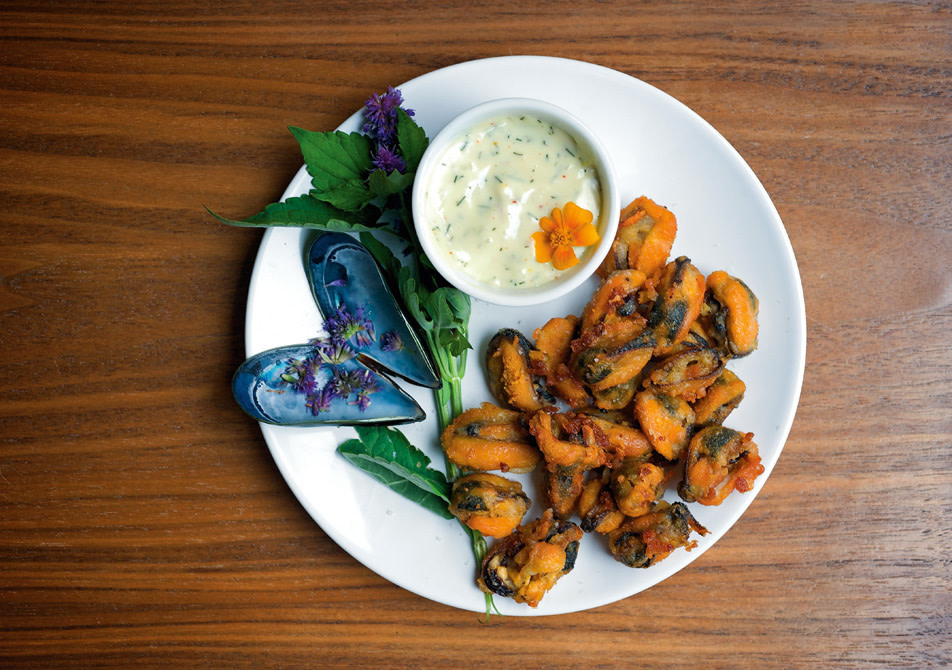
Din Din Supper Club—Deep fried mussels
It’s not every day you eat 23 exquisite dishes over four hours with 14 strangers in a Sellwood funeral parlor reborn as an eccentric music hall. Or swoon over squab primed by thick cream and fat blackberries while watching suntanned studs battle a 50-foot crab (thanks to 1961’s Mysterious Island projected on the wall). Or conclude one of the most ambitious meals staged in recent Portland history with cognac and chocolates to the sounds of your dinner companions playing pool. All this, in one evening, while a DJ spins old-school soul music—sometimes loud enough to wake the dead.

Courtney Sproule
But Din Din Supper Club—a monthly (or more often) meal held at changing venues—is not an everyday dining experience. Rising talent Courtney Sproule, age 29, has imagined one of the culinary adventures of the year: fine dining without the starch, to say the least. This is serious eating, sourced from farms and ranches an arm-stretch away and art-directed to surprise and delight while challenging your comfort zone.
The unexpected is part of the fun: brunches with skateboarding waiters; four-course evenings with musicians dancing on the tables; or, in the case of the 23-dish blowout, games of culinary scale, the table set with mile-high candelabras and triptychs of teeny servings on teeny plates—a reminder to appreciate the small in a world that increasingly feels too big. No two menus are alike, and all showcase Sproule’s skills and imagination, from a rack of venison with violet mustard sauce to eye-popping pasta made with flower petals pressed between translucent sheets of dough and draped over creamed, braised rabbit. For all the creativity, nothing Sproule does is random; each ingredient has a purpose and a framework, whether it’s a Spitzenberg apple crisp with cheddar ice cream or even one of Sproule’s trademark pop-culture quizzes. Bring your appetite … and an open mind. Din Din feels like a Mad Hatter’s tea party: weird, eye-widening, and inspiring. —KB
Castagna

Castagna—Heirloom shallots with squid arms and onion jus
Image: David Lanthan Reamer
A carrot in the hands of many chefs is simply a root vegetable. In the hands of Castagna’s Matt Lightner, it’s a revelation. Consider one such treatment: wedges of local carrots, cooked in birch-wood syrup, rolled in a crust of marrow and almonds, then surrounded with pillows of smoked marrow and a smattering of the sweetest-ever early carrots, all in a tiny moat of—you guessed it—carrot juice. The result is worthy of something between an art gallery (for presentation) and a theater (for performance) as this vibrantly orange vegetable’s sweet, earthy notes beautifully ride atop the rich, salty hint of fat, all the way to the next sip of wine.
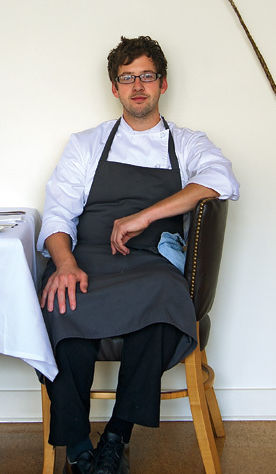
Matt Lightner
Image: David Lanthan Reamer
Barely 30 years old and chef at Castagna for little more than a year, Lightner has transformed this already respected bastion of clean and classic fare into an avant-garden laboratory for what some might call “New Natural Cuisine,” a religiously local haute cuisine movement that’s sweeping through culinary capitals. Depending on the season, majestic raw spot prawns might arrive in an aromatic bath of toasted Oregon hazelnuts, or the crowning dollop of roasted summer squash seeds could steal the show as they pop in your mouth like caviar. Fresh sea urchin—the foie gras of the ocean—might come paired with beets slowly caramelized until black for a sensual rivalry of textures and flavors. No matter what month, the fare here is exhilarating and unlike anything in Portland.
Honed at the great foodie think tanks of Mugaritz in Spain and Noma in Denmark, Lightner’s techniques range from old-fashioned braises to processes that could have been conjured by NASA. But his feet and, sometimes, his knees, remain firmly on the ground as he hunts for leaves, forages for wild plants and herbs, and clips flowers from the planter boxes behind the restaurant to use in his dishes. In a dining scene that too often celebrates the rustic over the refined, this is a chef who has the confidence to be bold—and, more important, the humility to show restraint with ingredients that are already perfect. —MT
Tasty n Sons
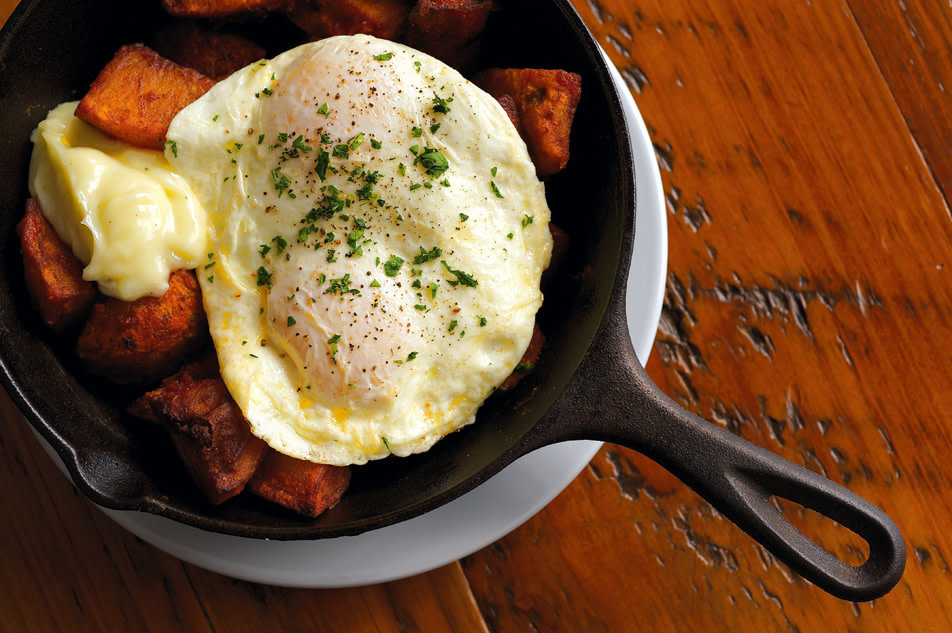
Tasty N Sons—Potatoes bravas with over easy eggs
In this breakfast-obsessed city, chef John Gorham has boisterously redefined the genre with his new NoPo dreamscape, Tasty n Sons: fun, loud, tightly seated, serving a mold-breaking daily brunch menu led by firecracker North African sausages and spicy stews. Located in the warm space he designed in the booming Hub complex on N Williams Avenue, Tasty offers big flavors, big portions, and crafted meats galore—all dished out daily and mightily affordable, in a warm, loose place that runs as smoothly as the bikes zooming by on the commuter corridor outside.

Chef-owner John Gorham
Image: David Lanthan Reamer
Gorham has long specialized in the menu as personal biography: his Southern roots, his six months in Ghana, and his one-time life as a butcher. He’s stirred these ingredients together before at Simpatica, the brunch and supper club he co-founded, and Toro Bravo, his wildly popular, pig-happy take on Spanish tapas. But at Tasty n Sons, he’s gone off the leash. A friend’s treasured recipe for French toast, for instance, originally called for melted Häagen-Dazs, but Gorham “lightened” the formula with an outrageous soak of custardy crème anglaise—just one element of his knock-you-down parade of rich, intense food.
Some dishes miss the bull’s-eye, and eggs can feel like a party guest who won’t leave, seemingly served on top of everything. But this is food with personal pride, down to the homemade granola—a rare healthy nod from the chef who famously lost 100 pounds last year and transformed himself into a triathlete. But the norm at Tasty n Sons is more post-training indulgence: a fried-green-tomato BLT with house-cured bacon, cumin-glazed yams (panfried in butter), and handsome frittatas holding hot balls of fried feta, all in a setting that shouts, “Share the food and join the party.” —KB
Olympia Provisions
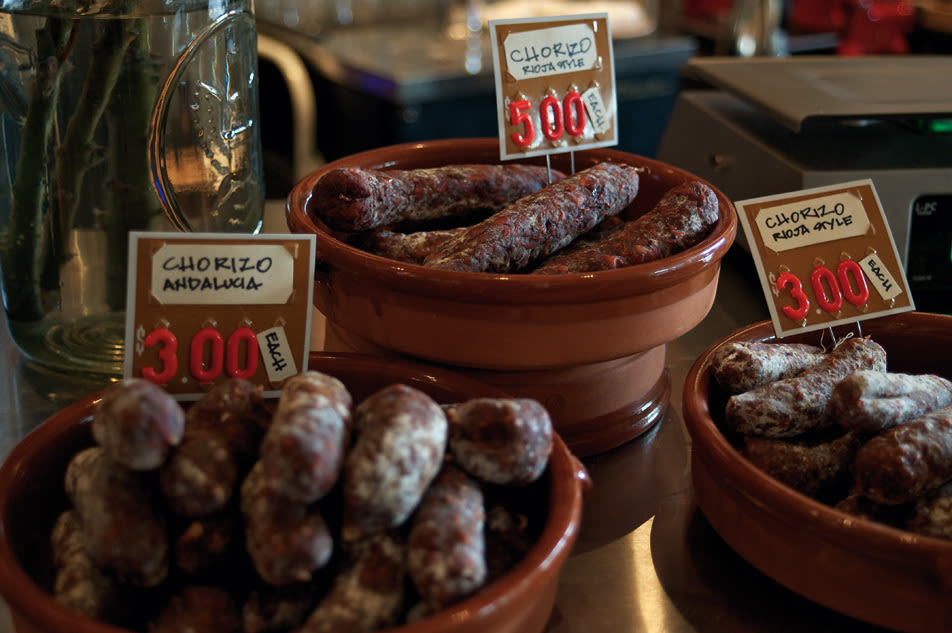
Olympia Provisions—House-cured chorizo
Image: David Lanthan Reamer
Hidden among the giant cardboard boxes and forgotten furniture in the Central Eastside’s warehouse district is a creative expression of communitarian Portland. Olympia Provisions has eight owners—a collective of friends and couples, all but one in their 30s, who operate less like traditional restaurateurs and more like a jam band of good musicians playing all original tunes. Call it a kind of “post-restaurant” that blurs the boundaries of eatery, salumeria, wine shop, and art happening in a candlelit space that feels like an out-of-the-way find, even though it’s just a bridge crossing from downtown.
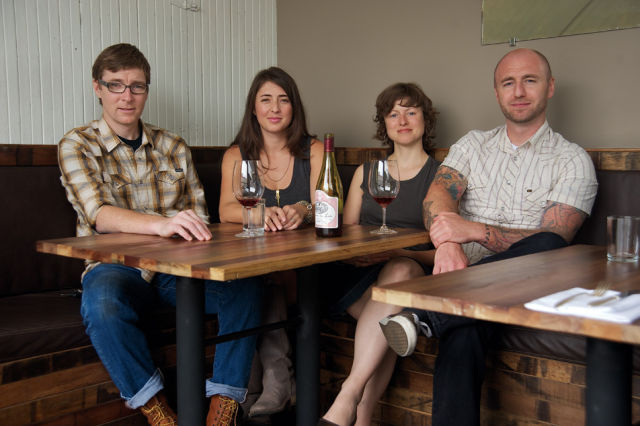
Owners Jason Barwikowski (from left), Carly Laws, Elizabeth Gaston, Eli Cairo
Image: David Lanthan Reamer
Among the players: Swiss-trained game chef and exciting charcuterie voice Eli Cairo, who has built Oregon’s first USDA-approved facility for dry-curing and distributing sausages in Olympic’s back room; edgy chef Jason Barwikowski, riffing on Cairo’s meats and rustic Spanish-European flavors; and undiscovered sommelier Carly Laws, pairing everything with a well-considered international wine list.
Mastermind Nate Tilden plucked most of these talents from the hipster chaos of his Clyde Common, putting them where they wanted to be—in a more personal place, cooking the stuff they want to eat. This isn’t food to analyze. There are no big culinary statements here—just an interesting, ever-changing collection of small pleasures presented in an intimate, handcrafted hideaway where the scent of salami welcomes you at the door and the vibe is great, especially at lunch. Hunker down at handsome wood tables set with elegantly folded linen. Shop the wine wall or the tiny meat counter. Soak in witty touches, like the big, blinking “MEAT” sign that seems rescued from a neon graveyard in Vegas. Traditions are curing here; new ideas, fermenting. Edith Piaf is on the soundtrack, and it’s music to our ears. —KB
Evoe
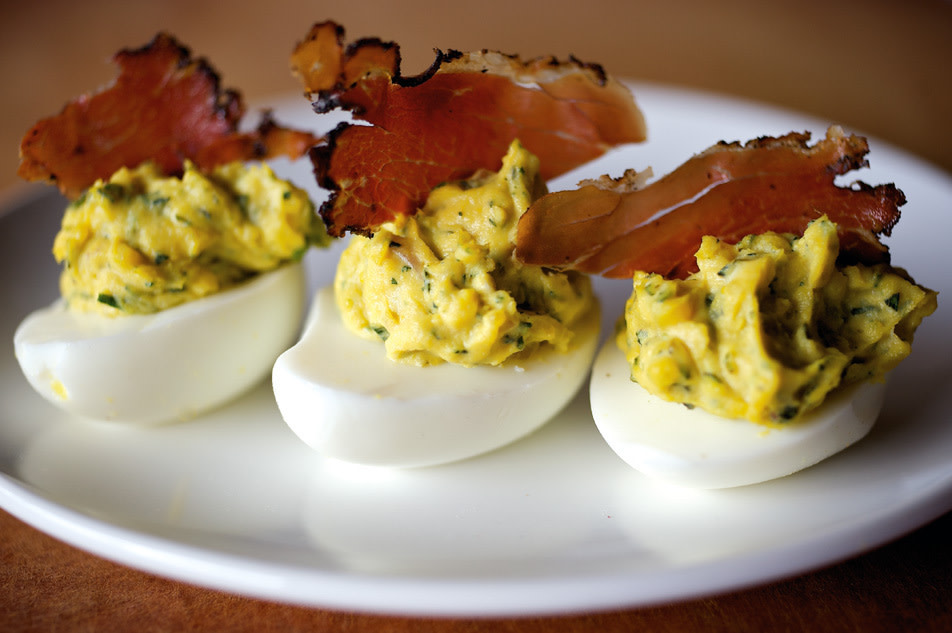
Evoe—Deviled eggs
Imagine you’ve wandered into a cooking show but the audience is just you. Standing in what looks like a dorm room decorated by Sur La Table, a chef works silently, making magic behind a handsome butcher block that doubles as prep station and dining table with stools. Scan the wall-size blackboard menu, call out your order, and Kevin Gibson quietly begins performing like Yoda on an episode of Survivor. Welcome to Evoe.
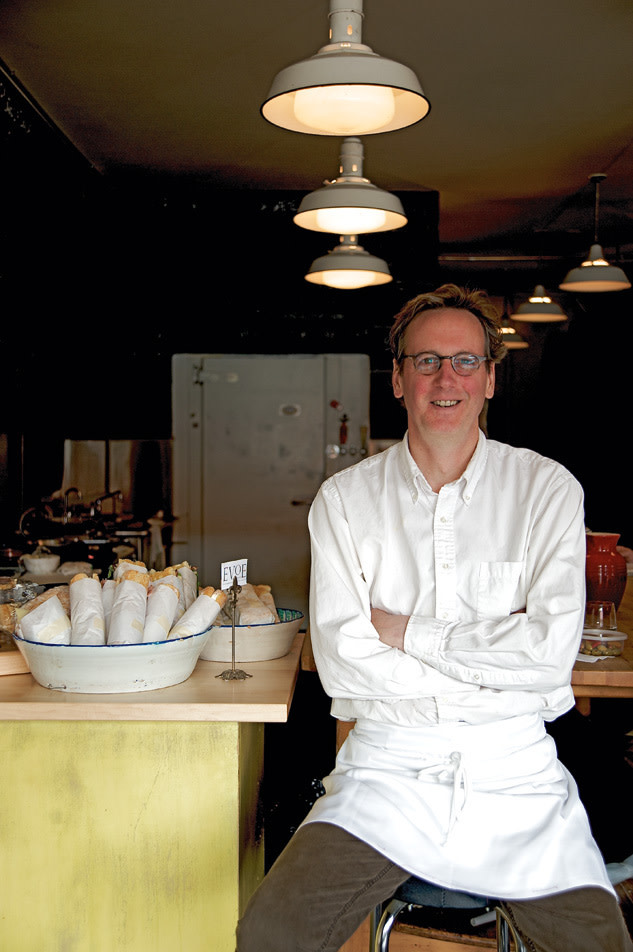
Chef Kevin Gibson
Two years ago Gibson, one of Portland’s most accomplished chefs, broke away from Castagna, where his impressive but quietly reserved cooking never found a big audience. At Evoe, he’s still wringing the maximum out of minimalism—a Gibson dish is all clean, intelligent, spare flavors. But now he shines comet-bright in his own universe (with help from Pastaworks, whose Hawthorne space he shares). Regulars come just to see how Gibson is responding to what the seasons bring: oysters, wild mushrooms, thick leaves of glacier lettuce. One customer makes weekend pilgrimages from Idaho every six weeks or so just to eat his way through the menu.
Food formulas don’t exist here. Gibson’s mood makes way for deviled eggs holding warm brioche crumbs or duck cracklings and chives. A humble cauliflower becomes a soup that says it all: beyond creamy (despite no cream), full of flavor nuances that make you smile. Every dish gets the same laser focus, whether Gibson is grilling a cheese sandwich, slicing up wild-boar pâté with sour cherries, or rubbing anise into duck to be paired with fresh kumquat chutney—a dish you’d be thrilled to find at a fancy restaurant for twice the price.
Even by Portland standards, Evoe is quirky. But for anyone who loves great food, it’s Exhibit A for why we are the envy of the country. —KB
Metrovino
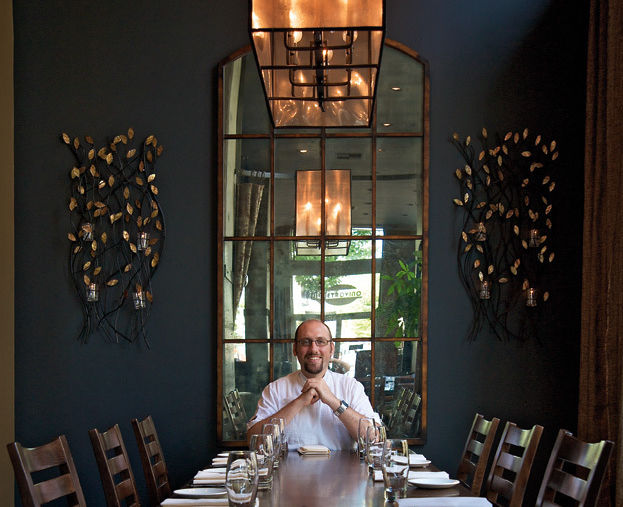
Chef Gregory Denton
Image: David Lanthan Reamer
Oregon has long been a wine lover’s paradise. But for those of us without pharmaceutical-rep salaries, most restaurant wine lists might as well be Donald Trump’s monthly American Express statement. Enter Metrovino. This 18-month-old Pearl District gem caters to oeno-geeks and novices alike (an unusual feat in itself), with neither having to spend lavishly for a tasting and eating adventure.
Thanks to a pricy, high-tech Italian pressurized cabinet system that prevents wine from spoiling, Metrovino sells more wines by the glass than most restaurants list by the bottle. It even peddles half-glasses of champagne and wallet-friendly 1.75-ounce pours, the ideal increment for food-pairing. But don’t call Metrovino a wine bar. It’s a full-fledged dining establishment led by executive chef Gregory Denton, who honed his wine-friendly riffs at Terra, a revered Napa Valley dining room.
Metrovino’s world wine tour includes impressively selected flights of three one-ounce pours of like-minded wines. Consider New and Old World chardonnay for an order of mellow gravlax (smoked salmon), a big Italian red with the gratin of Roman-style tripe stew, or run a gauntlet of grand cru Burgundies, Oregon pinots, and Bordeaux that all do justice to Denton’s creative treatment of proteins—like a grilled lamb T-bone served with a wheel of house-made fennel lamb sausage and an interplay of tart chevre, sweet fig, and a black-olive tapenade. Care to upgrade from the rarefied realm of Chateau Doisy Vedrines Sauternes to the supreme Ontario ice wine midway through dessert? Do it: a one-ounce pour barely tops a 10-spot. In fact, a recent tour of six great wines, including a top-shelf Oregon pinot, totaled only $25.
Finally, a Portland restaurant has cast wine in its proper role—as essential to the dining experience as chewing and swallowing. —MT

